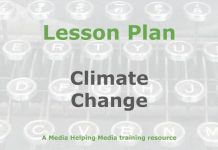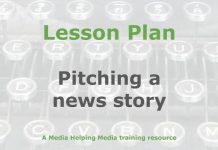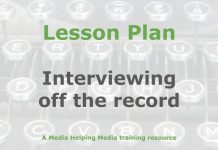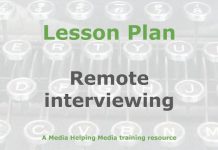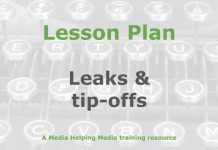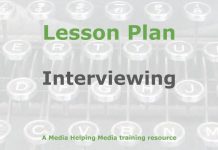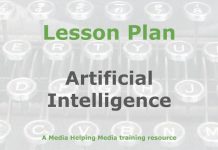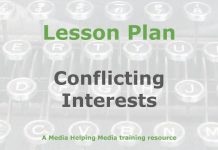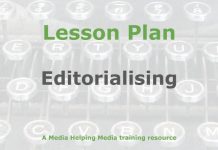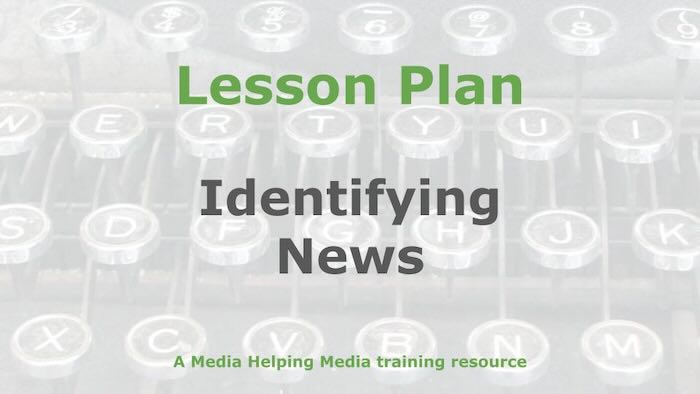 This lesson plan is designed to help students recognise how to spot a news story and develop it so that it informs the audience.
This lesson plan is designed to help students recognise how to spot a news story and develop it so that it informs the audience.
It’s based on the article ‘How to spot a news story‘ which we recommend you read before developing this lesson outline.
Learning objective
Students will identify the main elements that make a story newsworthy and evaluate its originality and impact. They will also analyse ethical considerations and develop a follow-up plan for a news story.
- Student-facing objective: By the end of this lesson the student will be able to spot what makes a story newsworthy, check if it’s original, think about its impact, and plan what to do next.
- Standards: A student will be able to spot a news story and research the elements thoroughly before publishing.
Learning activities
Warm-up
Display a series of headlines, mixing real news stories with fictional ones. Ask students to decide if each headline is a real news story or not. Encourage them to consider elements such as impact, timeliness, and unusualness. After each headline, prompt students to share their reasoning. This primes them to think critically about what makes a story newsworthy.
Direct instruction
Introduce newsworthiness: Present the core elements that make a story newsworthy: impact, timeliness, prominence, proximity, unusualness, and conflict. Use real examples to illustrate each element. For instance, discuss a recent impactful story and highlight its newsworthiness based on these criteria.
- Story originality: Explain how journalists determine if a story is fresh and original. Discuss methods such as consulting colleagues and consuming diverse news sources. Provide a scenario where students evaluate a story’s originality by comparing it with existing news coverage.
- Ethical considerations and follow-up plans: Outline the importance of ethics in journalism, focusing on accuracy, fairness, and transparency. Use a case study to explore ethical dilemmas. Then, emphasise the need for a follow-up plan by discussing how ongoing stories evolve and the journalist’s role in updating the audience.
Guided practice
Think, Pair, Share: Guide students through a collaborative exercise to apply newsworthiness criteria.
- Think: Present a brief news story. Ask students to individually identify elements that make it newsworthy, focusing on impact, timeliness, and unusualness.
- Pair: Have students pair up to discuss their findings. Encourage them to compare their assessments and refine their understanding of newsworthiness.
- Share: Facilitate a class discussion where pairs share insights. Highlight diverse perspectives.
- Originality: Provide a second story. In pairs, students determine its originality by comparing it to the first story and discussing potential ethical considerations.
- Follow-up: Ask pairs to outline a follow-up plan for one story, considering how it might evolve and the journalist’s role in maintaining audience engagement.
Independent practice
- Newsworthiness: Provide students with a set of news stories. Instruct them to individually analyse each story for newsworthiness using the criteria discussed: impact, timeliness, prominence, proximity, unusualness, and conflict.
- Originality: Assign students to research if the stories are fresh and original. They should use online resources to verify if similar stories have been published recently.
- Ethical considerations: Ask students to identify potential ethical issues in the stories. They should consider accuracy, fairness, and transparency.
- Follow-up plan: Have students draft a follow-up plan for one story, detailing how they would continue to report on it as it develops.
Circulate to observe and support students as needed.
Assignment
Ask students to answer these questions:
- What is one key element that makes a story newsworthy?
- How can you determine if a story is original?
- What’s one question you still have from today’s lesson?
Here are some suggested answers:
- Suggested answer to Question 1: Impact is a key element that makes a story newsworthy.
- Suggested answer to Question 2: You can determine if a story is original by checking if similar stories have been published recently.
Teacher resources
Differentiation guide
Advanced learners: Encourage deeper analysis by having students explore the relationship between a story’s complexity and its potential quality. Challenge them to identify stories with high complexity and discuss their potential impact. Assign a task to create a detailed follow-up plan for a complex story, considering various audience engagement strategies.
Striving learners: Simplify tasks by focusing on one or two core elements of newsworthiness, such as impact and timeliness. Provide structured templates to guide their analysis of news stories. Pair them with peers for collaborative work to enhance understanding and confidence. Use visual aids to illustrate ethical considerations and follow-up plans.
Notable definitions
- Newsworthiness: The quality of a story that makes it interesting and significant enough to be reported in the news. The main elements include impact, timeliness, prominence, proximity, unusualness, and conflict.
- Originality: The uniqueness of a story, indicating that it presents new information or a fresh perspective not previously covered by other news outlets.
- Ethical considerations: The principles guiding journalists to ensure accuracy, fairness, objectivity, and transparency in their reporting.
Required materials
- Headlines: A mix of real and fictional headlines for the warm-up activity.
- Case study: A prepared case study for discussing ethical considerations.
- News stories: A set of news stories for independent practice.
- Internet access: For students to research story originality.
- Paper and pens: For students to draft follow-up plans and take notes.
- Projector/screen: To display headlines and examples during direct instruction.
Lesson summary
- Warm-up
- Direct instruction
- Guided practice
- Independent practice
- Assignment
The free teaching tools at the Khan Academy were used as a basis for converting the original article into a lesson plan.
